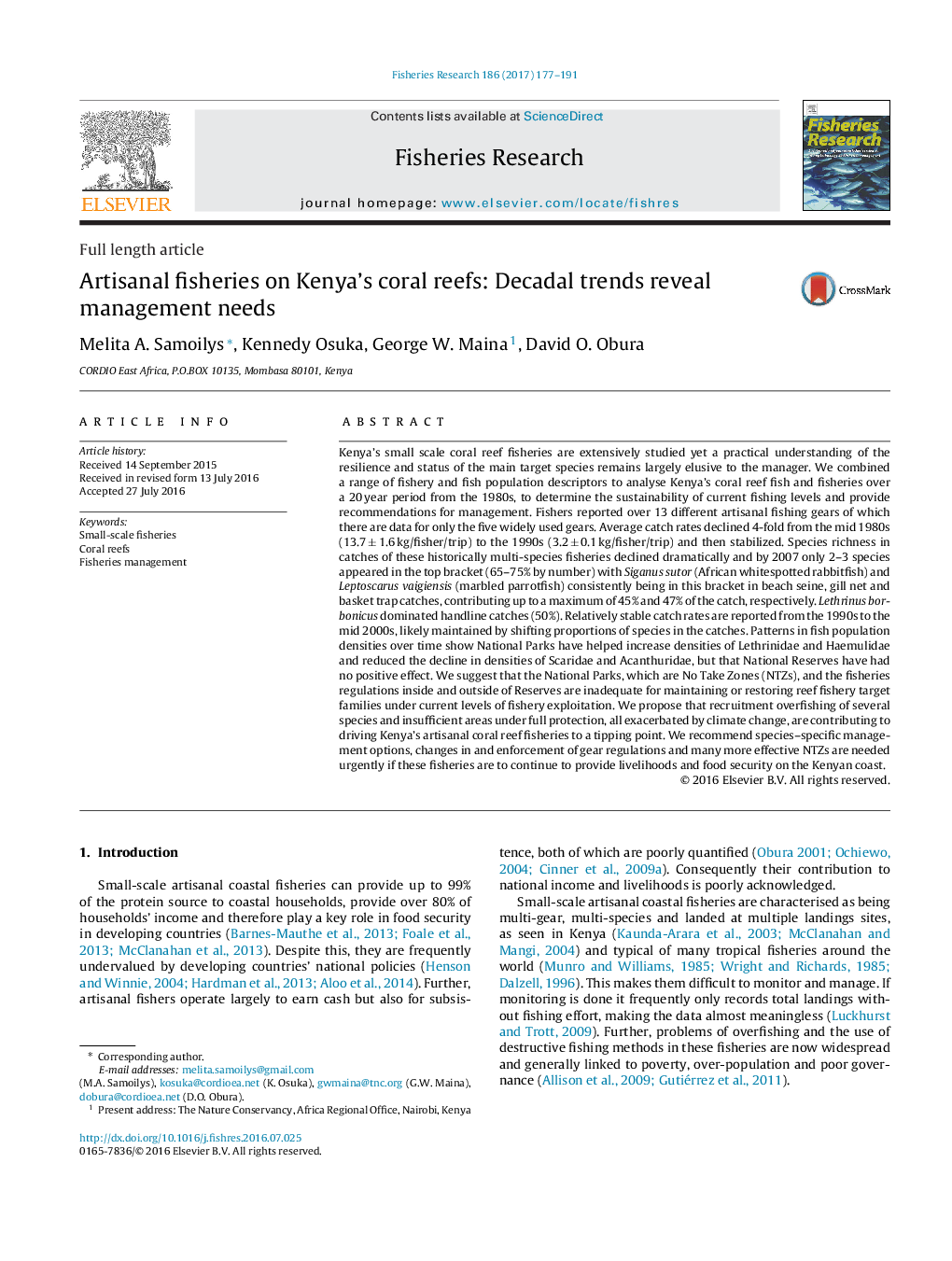| کد مقاله | کد نشریه | سال انتشار | مقاله انگلیسی | نسخه تمام متن |
|---|---|---|---|---|
| 4542613 | 1413079 | 2017 | 15 صفحه PDF | دانلود رایگان |
• Artisanal fisheries catch rates has declined 4-fold since the mid 1980s.
• Species diversity in catches declined to 2–3 species in the top 65% bracket.
• Fully protected sites have higher reef fish population densities but over decades have declined.
Kenya’s small scale coral reef fisheries are extensively studied yet a practical understanding of the resilience and status of the main target species remains largely elusive to the manager. We combined a range of fishery and fish population descriptors to analyse Kenya’s coral reef fish and fisheries over a 20 year period from the 1980s, to determine the sustainability of current fishing levels and provide recommendations for management. Fishers reported over 13 different artisanal fishing gears of which there are data for only the five widely used gears. Average catch rates declined 4-fold from the mid 1980s (13.7 ± 1.6 kg/fisher/trip) to the 1990s (3.2 ± 0.1 kg/fisher/trip) and then stabilized. Species richness in catches of these historically multi-species fisheries declined dramatically and by 2007 only 2–3 species appeared in the top bracket (65–75% by number) with Siganus sutor (African whitespotted rabbitfish) and Leptoscarus vaigiensis (marbled parrotfish) consistently being in this bracket in beach seine, gill net and basket trap catches, contributing up to a maximum of 45% and 47% of the catch, respectively. Lethrinus borbonicus dominated handline catches (50%). Relatively stable catch rates are reported from the 1990s to the mid 2000s, likely maintained by shifting proportions of species in the catches. Patterns in fish population densities over time show National Parks have helped increase densities of Lethrinidae and Haemulidae and reduced the decline in densities of Scaridae and Acanthuridae, but that National Reserves have had no positive effect. We suggest that the National Parks, which are No Take Zones (NTZs), and the fisheries regulations inside and outside of Reserves are inadequate for maintaining or restoring reef fishery target families under current levels of fishery exploitation. We propose that recruitment overfishing of several species and insufficient areas under full protection, all exacerbated by climate change, are contributing to driving Kenya’s artisanal coral reef fisheries to a tipping point. We recommend species–specific management options, changes in and enforcement of gear regulations and many more effective NTZs are needed urgently if these fisheries are to continue to provide livelihoods and food security on the Kenyan coast.
Journal: Fisheries Research - Volume 186, Part 1, February 2017, Pages 177–191
